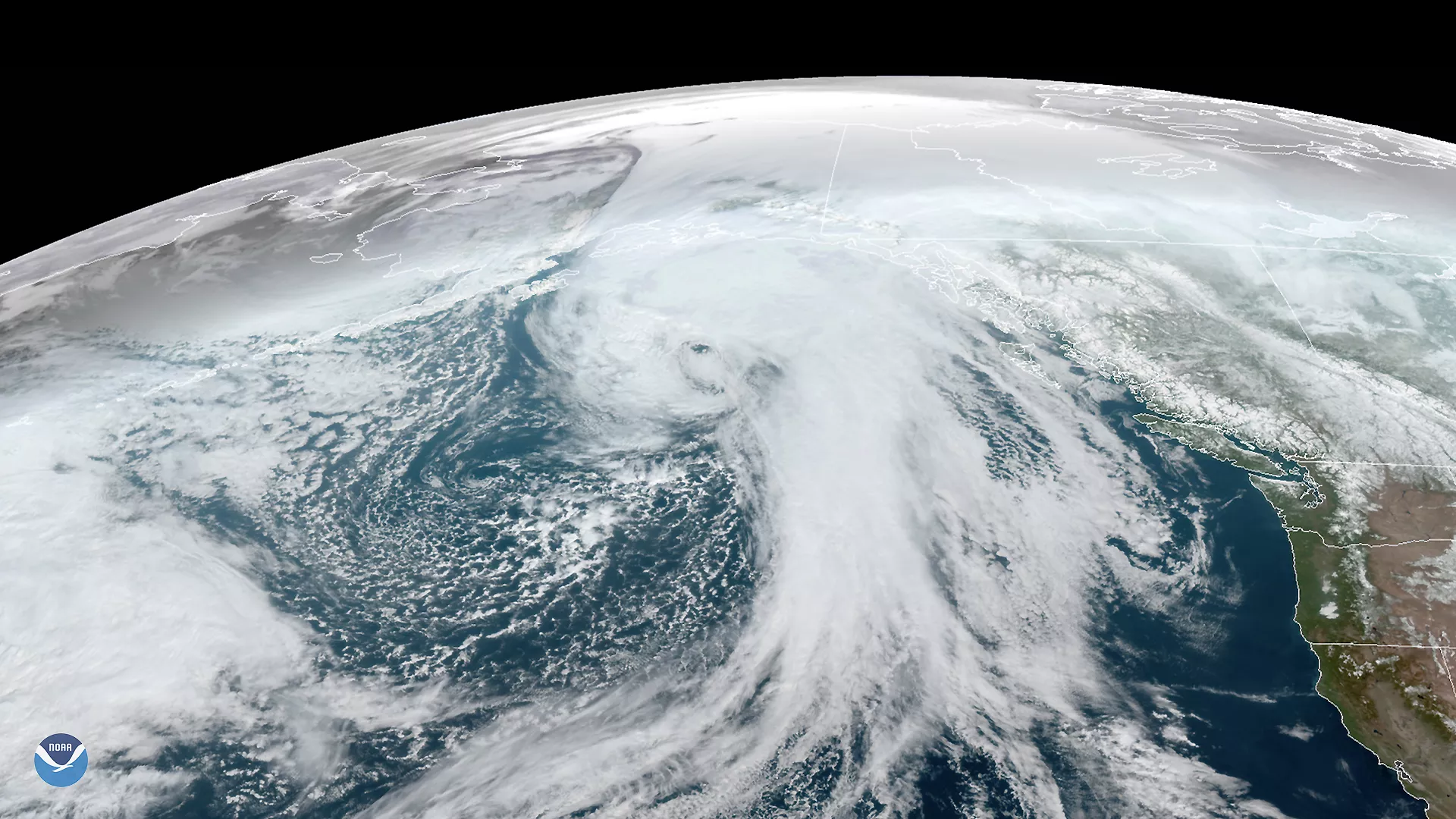February 21, 2020

On Feb. 18, 2020, GOES-West saw Anchorage, Alaska, set two records within a 24-hour period. According to the National Weather Service (NWS), the city reached a record high of 44 degrees Fahrenheit, tying the old record of 44 degrees Fahrenheit from 1988. Also, the new record snowfall of 8.9 inches broke Anchorage’s old one of 6.2 inches in 1967.
Climate data from the NWS Forecast Office in Anchorage show that the previous year, 2019, had the warmest annual temperature on record, at 42.5 degrees Fahrenheit. Additionally, the top 5 warmest temperatures for the area all occurred after 2014, with the least snow recorded during the 2014-15 season. For the month of February, the warmest day ever recorded was 49 degrees Fahrenheit on Feb. 27, 2014, showing a correlation to 2014-15 being the least snowy season recorded for Anchorage.
According to the NWS, the warmer-than-average weather and heavy snowfall from Feb. 18 are due to a combination of southeasterly winds and the remnants of a warm air mass. Specifically, the NWS reported that “strong upper-level dynamics are coupling with abundant moisture... to keep temperatures in some of those localized areas above freezing.” Also, a separate low developed in the Gulf of Alaska and lifted northward, directing moisture from the south into the northern coast.
This GeoColor enhanced imagery was created by NOAA's partners at the Cooperative Institute for Research in the Atmosphere. The GOES West satellite, also known as GOES-17, provides geostationary satellite coverage of the Western Hemisphere, including the United States, the Pacific Ocean, Alaska and Hawaii. First launched in March 2018, the satellite became fully operational in February 2019.